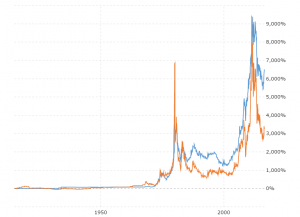A Simple Guide to Coin Grading
For coin collectors, the most valuable coin is always the one that has just been stamped. Perfect, with no scratches, nicks or marks, with a uniform finish, and with clear, crisp designs and inscriptions. The more time a coin has spent in someone’s pocket, the less it is worth. No matter how valuable a rare coin may be, the most valuable example will be the one with the cleanest finish.
Since deciding these things can easily become subjective, especially when comparing one coin with a particular defect with one with a different defect, and experts could easily differ in their assessment of value. Coin traders have developed a system of grading that takes most of the guesswork and subjectivity out of it. In addition, coin grading is certified, and only a certified grading has any real value when buying or selling coins. It is common to seal a coin in a scratch-resistant casing after professional grading, with the grade affixed to the casing. Never buy a coin with a damaged or opened casing, as of course it could have been switched for a lower grade coin.
In the USA there are four large certified grading companies:
- The Professional Coin Grading Service (PCGS)
- The Numismatic Guaranty Corporation (NGC)
- Independent Coin Graders (ICG)
- ANACS
These services charge fees, of course, for grading, depending on the value of the coin, and how quickly you want an answer. Usually graders do not take part in the coin trade, as that could influence their grading decisions.
The standard system of grading is on a scale of 1 to 70, where 70 is a perfect, completely unblemished coin, and 1 would be an item barely recognizable as a coin, with large flattened surfaces, and a date that is gone or barely visible. One a coin reaches a grade of 20, all major details will be visible, and the general wear will be medium to light. At 40 there will be only minimal wear, on high points, and the coin may be approaching ‘mint’ condition. Through the 50s the coin will be very close to a standard new, uncirculated coin. Coins from 60 on will be uncirculated, but may, in the lower 60s, have marks from being in a bag, or be a poorly struck coin. The upper 60s is reserved for only the almost perfect coins, so for example only a freshly minted bullion or commemorative coin would rate 69. Above 10, not all numbers are used, and the grades may rise in units of 5.
In addition, words are used to describe the grades. Here is a list of the terms used, and their abbreviations:
- Poor – PO – reserved for grade 1 only
- Fair – FR – grade 2 coins
- About Good – AG – (or Almost Good) – grade 3 coins, with worn rims extending into the design
- Good – G – grades 4, 5 and 6. Very little detail visible. Despite the name, this is actually a significantly worn coin
- Very Good – VG – grades 8, 9 and 10. Medium to heavy wear
- Fine – F – grades 12 to 15. Medium wear
- Very Fine – VF – grades 20 to 35. Medium to light wear, with all details visible
- Extremely Fine – XF, EF – grades 40 and 45): some light wear only
- About Uncirculated – AU – (or Almost Uncirculated) grades 50 to 58. Virtually no wear at all
- Mint State – MS – (or Uncirculated – Unc, or Brilliant Uncirculated – BU) grades 60 to
70. Within this range small improvements create the increases in grade
- Uncirculated – 60, 61, 62
- Select Uncirculated – 63
- Choice Uncirculated – 64
- Gem Uncirculated – 65, 66
- Superb Gem Uncirculated – 67, 68, 69, only the slightest marks or imperfections
- Perfect Uncirculated – 70), flawless
Combining these systems gives the final grade, G-6, AU-58, or MS-66, for example.









Good, informative article.
How are First-Strike coins rated? Is it profitable to use a coin grading company for First-Strike Silver Dollar Coins. Does the year of minting make a difference?
Do these grading companies charge by the coin, or is there a discount for submitting many coins of the same kind? What if the coins were shipped from a mint in a sealed square 20 coin tube that was never opened. Would that increase the value of the coin when submitted to a coin grader?